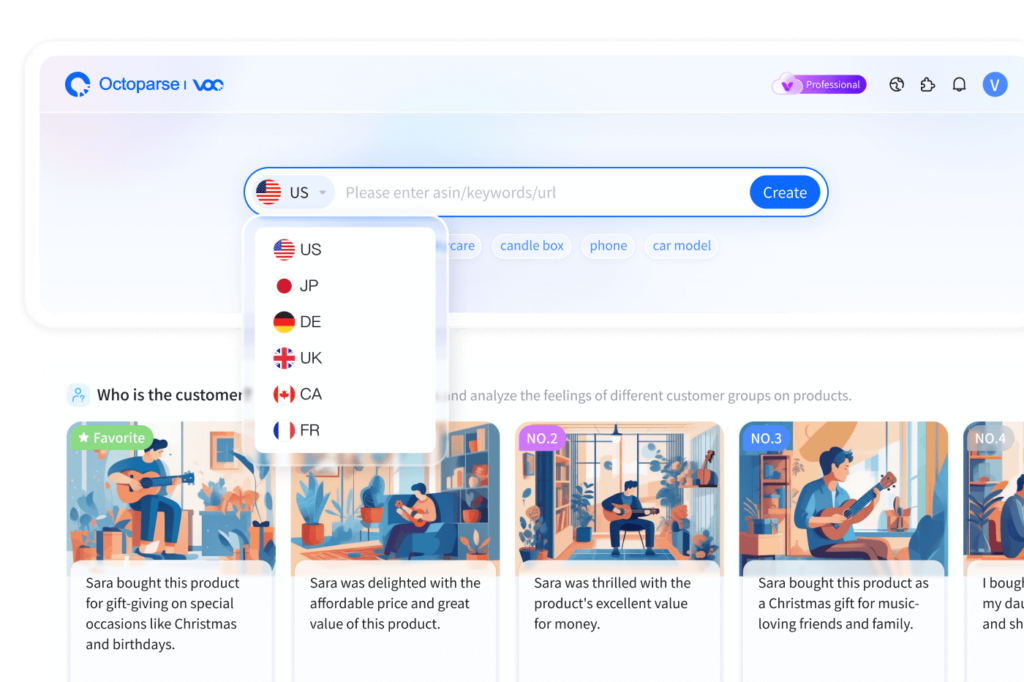Sentiment analysis allows businesses to analyze customer feedback and gauge sentiment to improve products, marketing, and customer experience (CX). In this guide, we’ll introduce you to customer sentiment analysis and provide you with a top list of customer sentiment analysis tools for 2024!
What is Customer Sentiment Analysis?
Sentiment analysis is the computer process of assessing and comprehending the subjective ideas, attitudes, and emotions represented in a piece of writing. It seeks to ascertain the overall mood toward specific subjects, items, people, or organizations.
The primary purpose of sentiment analysis is to extract and quantify the dominant sentiment from textual data. It examines text to determine if the conveyed viewpoint is good, negative, or neutral. This enables businesses and organizations to accurately assess how their customers, stakeholders, and the broader public perceive them.
Sentiment analysis is often used to assess attitudes regarding businesses, goods, services, persons, policies, and other topics based on sources, such as customer reviews, survey results, social media interactions, and online forums. It gives data-driven insights to help influence corporate strategy and choices.
Automated analysis offers a scalable method for processing qualitative input at scale and gaining actionable insights that manual analysis alone cannot give. This makes sentiment analysis a vital tool for understanding the customer’s voice, monitoring brand perception, and constantly enhancing goods, services, and experiences.
Benefits of Analyzing Customer Sentiment
Sentiment research has several advantages for understanding consumers and enhancing your business:
- Identify pain points and areas for improvement: By analyzing customer feedback and reviews, you can pinpoint problems or weaknesses in your products, services, and customer experience. This allows you to focus improvement efforts on the biggest pain points.
- Track sentiment over time: With ongoing sentiment analysis, you can identify trends and track how sentiment towards your brand changes over time. This helps gauge the impact of marketing campaigns, new products, and other initiatives.
- Benchmark against competitors: Use sentiment analysis to see how customers feel about you versus competitors. Track your net sentiment score compared to rivals to benchmark performance.
- Inform marketing campaigns and messaging: The insights from sentiment analysis can reveal how marketing campaigns and messaging resonate with customers. This helps refine campaigns and language to be more effective.
- Improve products and services: By truly understanding customer pain points and feedback, you can iterate and enhance your offerings. Sentiment analysis gives you the voice of the customer to drive product improvements.
Top 4 Tools for Customer Sentiment Analysis
TOP 1: Octoparse VOC
⭐⭐⭐⭐⭐
Strong web scraping capabilities are combined with integrated sentiment analysis features in Octoparse VOC. You may use this tool to analyze text from social media, reviews, polls, and other sources to determine the sentiment of consumer input.
Among the main advantages of utilizing Octoparse VOC for sentiment analysis is its capacity to extract information from the internet. Reviews, comments on social media, survey answers, and other text data may be extracted from the web using Octoparse. With Octoparse, you can collect a sizable dataset for sentiment analysis by scraping data from practically any website.
The sentiment analysis function of Octoparse VOC starts working as soon as the data is scraped. It examines the text to find a sentiment that is neutral, negative, or positive.
Octoparse VOC provides clear visualizations and metrics around sentiment analysis. You can view the sentiment ratio to see the percentage of positive, negative, and neutral results. Charts and graphs provide further visualization of sentiment analysis. This makes it easy to interpret the results and identify key trends.

TOP 2: MonkeyLearn
⭐⭐⭐
Text data from many sources may be easily analyzed with MonkeyLearn, an AI-powered sentiment analysis API. Emails, chat logs, papers, internet material, social media, support requests, and more may all be processed by it.
One of the key features of MonkeyLearn is its customizable sentiment analysis models. You can tune the algorithm to detect sentiment tailored to your unique data. For example, you can train it to understand industry-specific language and jargon. The custom models provide more accurate results tuned to your business needs.
In addition, MonkeyLearn offers a variety of metrics and visualizations for understanding sentiment. You can view overall sentiment ratios, trends over time, and more. The dashboards allow you to monitor changes and compare sentiment across data sources.
MonkeyLearn integrates seamlessly with a wide range of applications and workflows. You can analyze sentiment in real-time or batch-process large datasets. The API is easy to implement and the platform includes client libraries for various programming languages.
TOP 3: MeaningCloud
⭐⭐⭐
A powerful sentiment analysis API for text, audio, and video information is provided by MeaningCloud. It analyzes sentiment and extracts insights using machine learning and natural language processing.
The linguistic support offered by MeaningCloud is one of its main advantages. In addition to English, the API supports processing materials in Spanish, French, German, and Italian. This facilitates the analysis of comments from overseas customers.
In addition, the program can analyze audio and video data by converting spoken words into text for analysis using voice recognition and transcription. This enables you to comprehend the tone of podcasts, taped interviews, help calls, and other audio-visual materials.
Customized models are available from MeaningCloud, allowing you to train the algorithm with your unique data to get more precise answers. It offers simple-to-understand sentiment analysis visualizations, such as ratios of neutral, positive, and negative sentiment.
In general, MeaningCloud is a great option for anybody in need of a multilingual, enterprise-level sentiment analysis API that can be used with text, audio, and video. It offers the precision and adaptability required by big businesses to analyze vast amounts of consumer data.
TOP 4: Google Cloud Natural Language
⭐⭐
Google Cloud Natural Language provides powerful sentiment analysis capabilities through Google Cloud. It allows you to analyze text to understand the overall sentiment and subjective opinions.
Some key features of Google Cloud Natural Language for sentiment analysis include:
- Sentiment analysis of text to determine positive, negative, or neutral sentiment. It uses machine learning models to analyze the sentiment of text.
- Entity analysis to identify key nouns and entities within the text and understand how they relate to the overall sentiment. This provides contextual understanding.
- Native integration with Google Cloud services like BigQuery, Dataflow, and Pub/Sub to enable large-scale sentiment analysis.
- Support for various languages such as English, Spanish, and Japanese, so you can analyze text in different languages.
- Analysis of documents, online content, product reviews, social media, and more. The API allows you to pass text of up to 1,000,000 characters to be analyzed.
- Sentiment analysis scores and magnitude metrics were provided to understand the overall sentiment distribution and intensity.
- Syntax analysis to break down grammar and analyze text structure. This can improve the accuracy of the sentiment analysis.
The scalability of Google Cloud Natural Language makes it well-suited for large datasets and enterprise-scale sentiment analysis. It can efficiently process high volumes of data and deliver fast analysis. Overall, it provides an accurate and easy way to gain sentimental insights from customer feedback.
Wrap Up
An effective technique to learn how your consumers really feel about your goods, services, and brand is through sentiment analysis. With the correct tools, you may find trends and patterns in emotional sentiment by analyzing vast amounts of unstructured text data, including reviews, social media postings, survey replies, and more.
The best solutions in this guide, such as Octoparse VOC, provide intuitive user interfaces and precise sentiment analysis capabilities driven by AI. They let you create customizable models, import data from many sources, and produce sentiment measurements and visuals that are simple to comprehend.
Get started with your consumer sentiment analysis right now by registering for a free Octoparse VOC trial, to shed light on your customers’ true feelings, the integrated sentiment analysis engine will automatically identify positive, negative, and neutral sentiments.



